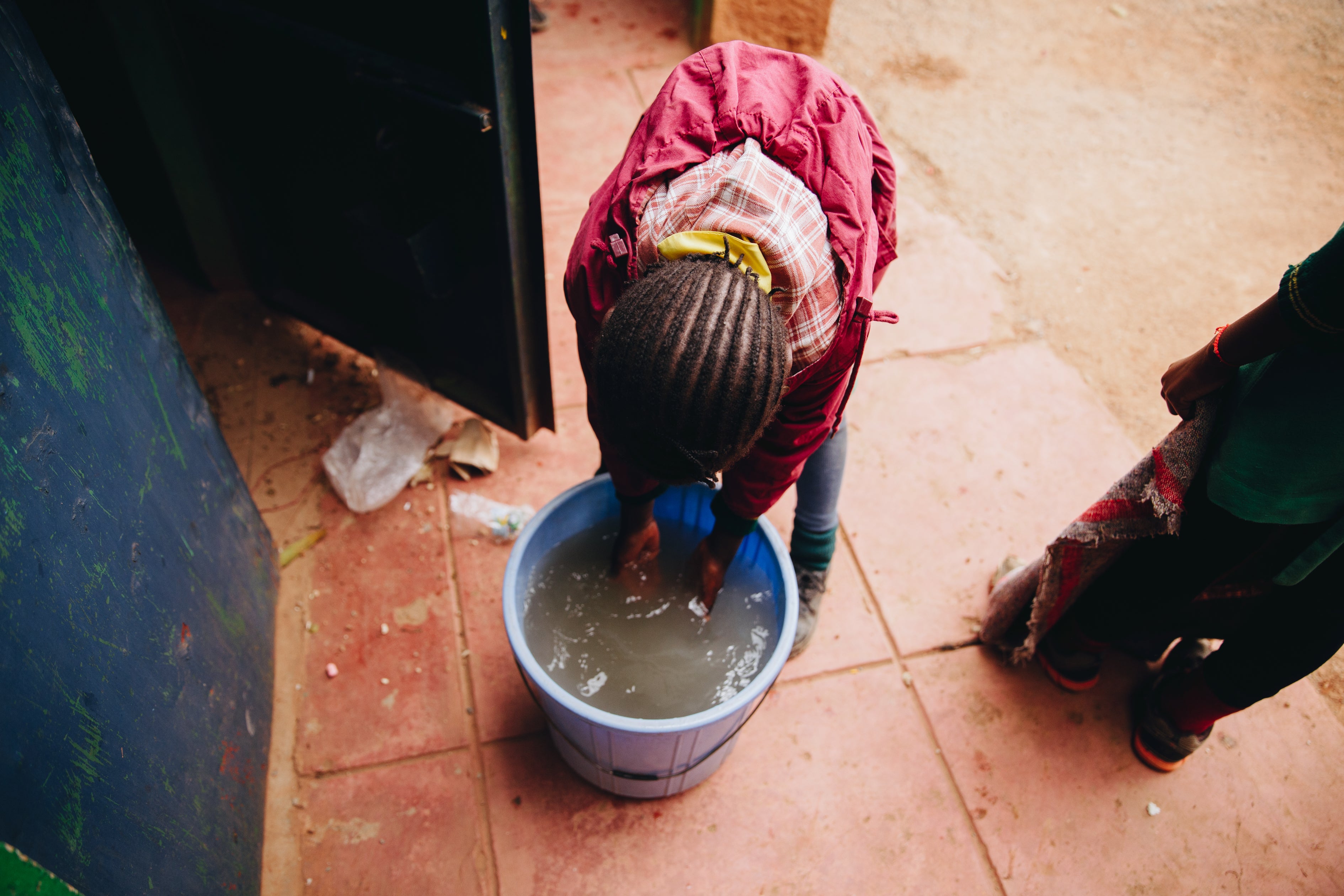
Environmental racism: which people suffer most from disasters?
Racism stems from a simple (and sad) calculation: the more people are excluded from their socioeconomic context, the greater their chance of suffering from environmental disasters.
____________________________________________________________________________________________________________________________________
Think about the following situations: floods, flooding, lack of access to drinking water and garbage collection, dam failures… What is the scenario that came to your mind? Who are the people involved in these stories?
“ There is a common sense, and even a myth created around the environmental issue, that it affects all of us equally ” — this is how the professor of Environmental Management at USP, Marcos Bernardino de Carvalho, begins to contextualize the concept of racism environmental in an interview with Jornal da USP .
More than a simple concept, the term “environmental racism” is also a denunciation. The expression highlights the direct relationship between racism and the environment.
After all, the expression denounces that the distribution of environmental impacts does not occur equally among populations. But it has a main target: the historically marginalized and vulnerable portion of the population.
That is, the concept leaves aside the idea that environmental disasters are inevitable misfortunes of nature, in order to seek accountability from the institutions that create conditions for these impacts.
To clarify this theme, the purpose of this article is to reflect on the concept of environmental racism , from its emergence to the practical examples that ( unfortunately! ) happen close to us.
What is environmental racism?
To begin with, it is important to understand the concept of environmental racism. In general, it is a process of discrimination that peripheralized populations — and composed of minorized groups , suffer through environmental degradation.
(At this point, it is worth explaining that these populations are not minorities — like black people who make up 56% of the population in Brazil, but are minorities in decision-making positions).
The concept of environmental racism is based on the assumption that environmental impacts are not homogeneously distributed among the population.
And, in this conception, it is the people who live in vulnerable situations who are affected in greater proportion by these environmental ills.
The expression “environmental racism” stems from a simple ( and sad ) calculation: the more a person is excluded from the socioeconomic context, the greater their chance of being negatively impacted by environmental changes.
The consequences of this system are already part of the terms of the United Nations (UN), such as:
- Climate apartheid: people who suffer disproportionately from climate change;
- Climate gentrification: concentration of wealthier classes and social groups in greener and less disaster-prone areas;
- Climate refugees: people who leave their regions due to climate damage.
The relationship between intersectionality and environmental injustice
In fact, the concept agrees that intersectionalities — which cut across gender, race and class — should be the main lens through which it is possible to analyze contemporary problems.
Or, in the conception of urban sociologist and environmental activist, Rita Maria dos Passos, the intersectional perspective is within the “umbrella” of environmental racism:
“When we analyze the struggles for housing of the population compulsorily displaced from Vila Autódromo for the construction of the Olympic Park or when we look at the leaders who are against Belo Monte, the outline of gender, race and class is latent. I think looking at environmental racism and understanding intersectionalities is key.”
Therefore, “ the spaces from which people can be removed and neglected have color: they are black, they are indigenous ”, she explains.
This is the same point of view of the current Minister of Human Rights, Silvio Almeida, who explains why racism should be a lens to analyze major contemporary issues:
“In a world in which race defines life and death, not taking it as an element of analysis of the great contemporary issues demonstrates the lack of commitment to science and to the resolution of the great ills of the world”.
All this outlines a profile that links intersectionalities with environmental injustice. The “sacrifice zones” — where the sanitary landfills and untreated sewage are located, are the locations that concentrate, in the vast majority, black people, economically vulnerable and with low access to public policies.
Where did the concept of environmental racism come from?
The creation of the term “ environmental racism ” was attributed to the black activist and leader of the civil rights movement in the United States, Benjamin Franklin Chavis Jr., in 1981.
Chavis' resume is long and impressive: he was assistant to Martin Luther King Jr, Baptist pastor, political activist and winner of the Nobel Peace Prize for his non-violent actions to combat racism in the United States.
The concept emerged in the United States in a context of demonstrations by the black movement against environmental injustices.
At the time, the black population of Warren County, North Carolina, led the uprising against the installation of a PCB (polychlorinated biphenyl) toxic waste landfill.
Benjamin Franklin Jr stood out when denouncing that “ the black population was the population most victimized by environmental degradation ”. In other words, environmental injustices “ had, so to speak, a preferential target ”.
Even the data confirmed these accusations. Sociologist Robert Bullard identified that at least 14 of the 17 industrial waste dumps in the city of Houston, Texas, were in neighborhoods with a black population - although only 25% of the population of Houston was black.
In 1983, a report by the United States Environmental Protection Agency (EPA) pointed out that, in 8 states in the South of the country, 75% of tailings deposits were concentrated in neighborhoods with a predominantly black population.
Thus, in Chavis's conception, environmental racism is:
“is racial discrimination in the elaboration of environmental policies, application of regulations and laws, deliberate targeting of black communities for the installation of toxic waste, official sanction of the presence of poison and pollutants that threaten the lives of communities and exclusion of black people from the leadership of the ecological movements”.
Examples of environmental racism in Brazil
Unfortunately, more than a complex theory, environmental racism is more concrete than it seems. And you don't even have to go far to check it in practice.
In Brazil, cases of racism and environmental injustice happen every day and in all regions. But two recent cases are very illustrative:
2015 - Failure of the Samarco dam in Mariana, in Minas Gerais
- 84.5% of the victims were black people
- The Krenak indigenous people had their livelihoods compromised by the pollution of the Rio Doce as a result of the accident
2019 - Failure of the Vale dam in Brumadinho, in Minas Gerais
- 58.8% of the people killed did not declare themselves white and had an average income below two minimum wages;
- 70.3% of missing people also did not declare themselves white and had an average income below two minimum wages;
- The Pataxó indigenous people were harmed by the accident.
The Oswaldo Cruz Foundation (Friocruz) provides an online tool that maps conflicts involving environmental injustice in Brazil.
When I wrote this article, the Map of Conflicts – Social Injustice and Health in Brazil had already found 627 occurrences of conflicts.
How to combat environmental racism?
The fight against environmental racism involves issues that are much more subjective and profound than what can be simplified.
After all, they mainly comprise the fight against the issues that underlie our society: mainly, class inequality and structural racism.
But, without a doubt, the combat actions must go through the defense of human and environmental rights and the appreciation of the experience of the communities that are affected by these issues.
Even so, the Brazilian Network of Environmental Justice (RBJA) established 5 principles to compose and strengthen an environmental justice system, which are:
- Disruption with models of distribution of negative environmental consequences disproportionately borne by secularly vulnerable social, ethnic or racial groups;
- Promotion of equitable access to the country's environmental resources;
- Ensuring access to information on the use of natural resources, disposal of waste and location of environmental risks;
- Expansion of the participation of affected social groups in democratic and participatory processes for defining policies, plans, programs and projects that involve changes in their territories and territorialities;
- Encouraging the establishment of alternative development models that ensure the democratization of access to environmental resources and the sustainability of their use.
At this point, Rita Maria da Silva Passos, explains that it is essential (albeit corny) to give protagonism to black people in the construction of knowledge of the environmental cause.
After all, these people “ literally feel it on their skin ”. In his “ places of speech, he has a way of living and feeling that is impossible for a white person to translate ”.
References
General Accounting Office , Washington, DC (USA). Resources, Community and Economic Development Div. Siting of Hazardous Waste Landfills And Their Correlation With Racial And Economic Status Of Surrounding Communities. Published June 1, 1983. Available at: http://archive.gao.gov/d48t13/121648.pdf . Accessed on June 25, 2023.


